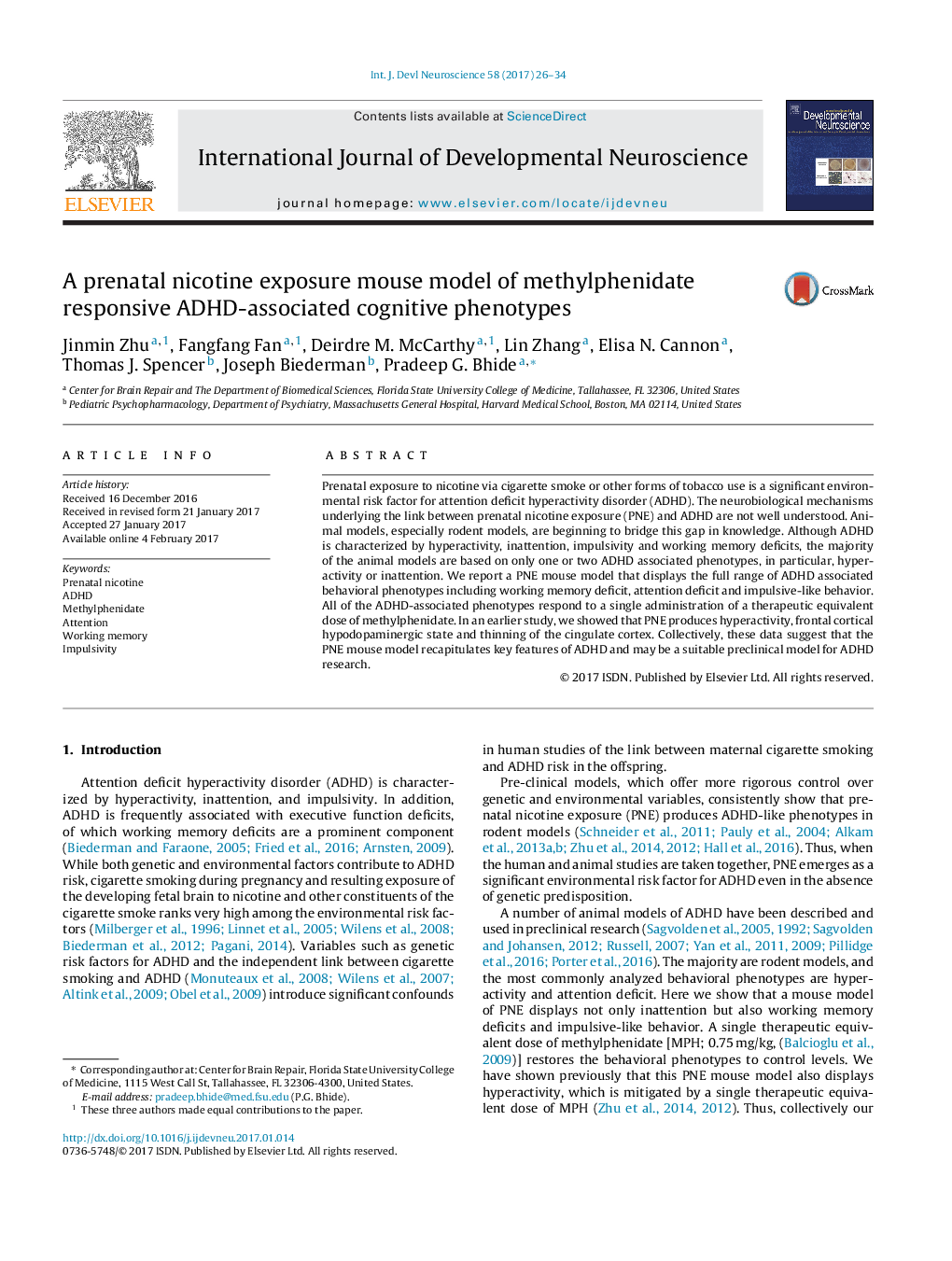| Article ID | Journal | Published Year | Pages | File Type |
|---|---|---|---|---|
| 5585792 | International Journal of Developmental Neuroscience | 2017 | 9 Pages |
Abstract
Prenatal exposure to nicotine via cigarette smoke or other forms of tobacco use is a significant environmental risk factor for attention deficit hyperactivity disorder (ADHD). The neurobiological mechanisms underlying the link between prenatal nicotine exposure (PNE) and ADHD are not well understood. Animal models, especially rodent models, are beginning to bridge this gap in knowledge. Although ADHD is characterized by hyperactivity, inattention, impulsivity and working memory deficits, the majority of the animal models are based on only one or two ADHD associated phenotypes, in particular, hyperactivity or inattention. We report a PNE mouse model that displays the full range of ADHD associated behavioral phenotypes including working memory deficit, attention deficit and impulsive-like behavior. All of the ADHD-associated phenotypes respond to a single administration of a therapeutic equivalent dose of methylphenidate. In an earlier study, we showed that PNE produces hyperactivity, frontal cortical hypodopaminergic state and thinning of the cingulate cortex. Collectively, these data suggest that the PNE mouse model recapitulates key features of ADHD and may be a suitable preclinical model for ADHD research.
Related Topics
Life Sciences
Biochemistry, Genetics and Molecular Biology
Developmental Biology
Authors
Jinmin Zhu, Fangfang Fan, Deirdre M. McCarthy, Lin Zhang, Elisa N. Cannon, Thomas J. Spencer, Joseph Biederman, Pradeep G. Bhide,
